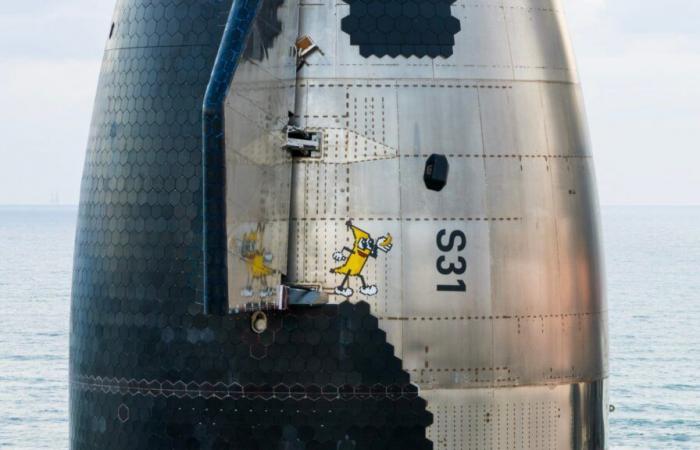The Starship's 6th test flight, on the night of November 19 to 20, was generally rather successful. Even if SpaceX this time skipped the recovery of the Super Heavy booster, the second stage notably succeeded in re-igniting its Raptor engines in the vacuum of space – a sine qua non condition for the machine's future missions. . But this was not the only major first celebrated by the company: the ship also carried its very first physical payload.
Intuitively, you would think that SpaceX would have installed a replica of a Starlink satellite or a scientific instrument there. But this cargo was in fact much more unusual: it was a fake bananawhich the public was able to see floating for a few minutes thanks to a camera installed in the Starship's fairing.
This artificial fruit was first intended to serve visual weightlessness indicatorin order to show that the craft had passed into a suborbital trajectory. It also served as reference to illustrate the incredible proportions of the Starship's cargo bay. At 17 m high and 8 m in diameter, it is by far the largest of all current spacecraft; for reference, this is a space larger than the entire pressurized volume of the International Space Station!
The first step in a long certification process
Once the vehicle is mature, it will be capable of deploying equipment that is both very heavy and bulky, such as a large number of Starlink satellites or large scientific instruments. But before getting there, SpaceX will first have to prove to the Federal Aviation Administration (FAA), the agency which issues flight authorizations, that its machine is indeed capable of doing so. The presence of this banana, of a size comparable to that of a Starlink Mini, will obviously not be enough to convince regulators. But it is a first step in this direction.
« You can see our banana, which serves as today's zero-G indicator “, explained Kate Tice, an engineer at the company who was commenting on the launch. “ Although this payload will remain inside the vehicle and will not be deployed today, it gave us the opportunity to do a test run of the payload validation procedures required by the FAA. This is something we hope to do next year if we start flying our first Starlink satellites on Starship “, she clarified.
This offers us some clues about SpaceX's next goals. With the next test flights, Elon Musk's company will perhaps begin to install much larger objects in the fairing. These will likely not be actual satellites, but rather inert masses that will represent the devices that Starship will be tasked with deploying into orbit once it is operational.
At this time, however, it is difficult to determine whether SpaceX will prioritize this element. The firm could also focus on recovery. As a reminder, during the 5th test flight, the company managed to catch the Super Heavy booster with the articulated arms of its immense launch tower – a true feat of engineering that will have to be repeated many times. SpaceX will also have to recover the second stage, namely the Starship itself, in the same way. We therefore look forward to seeing you in a few weeks to announce the objectives of the next test flights.
???? To not miss any news on the Journal du Geek, subscribe on Google News. And if you love us, we have a newsletter every morning.





